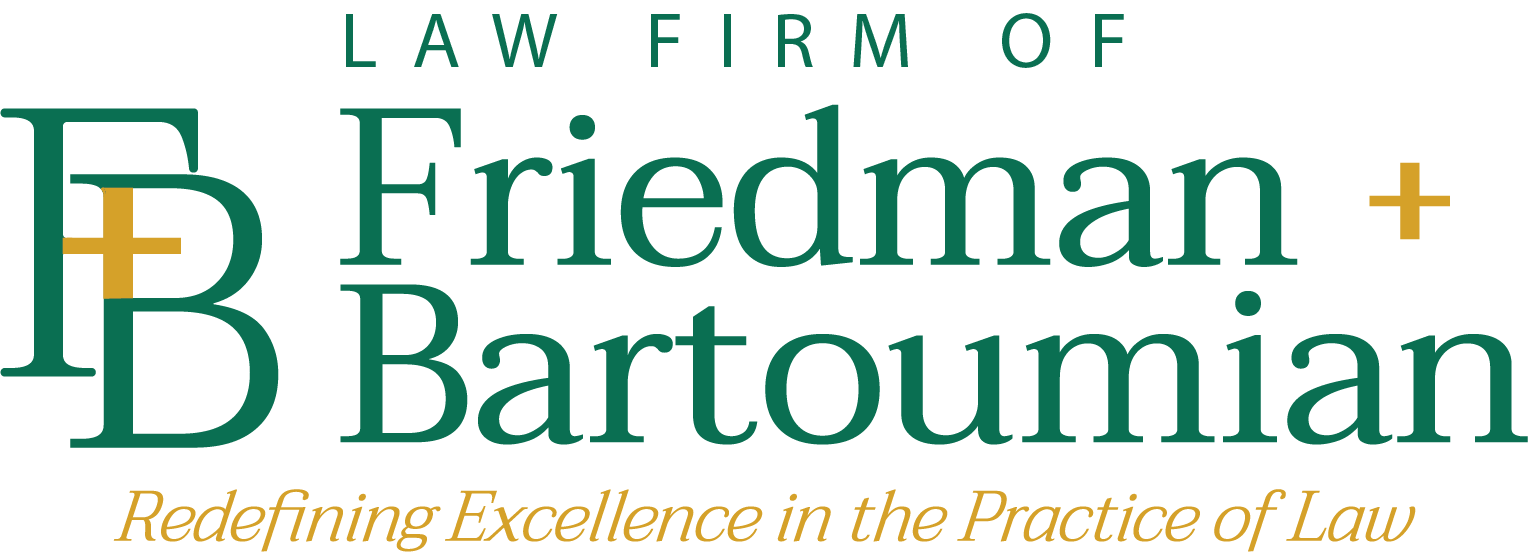We are grateful to all our loyal clients, valued employees and dear colleagues. Thank you.
A lot has happened since we first opened our doors. Please enjoy this flash to the past showing how far workers’ compensation has come in just 32 years.
For some this could be history, but for Friedman and Bartoumian, it’s experience.
32 Years Ago… Workers’ Compensation Practice in
Benefits:
- Temporary-Total Disability – Unlimited entitlement; No 104-week limit:
- Maximum benefit: $224 per week
- Minimum benefit: $112 per week
- Permanent-Partial Disability
- Maximum benefit: $70 per week
- Minimum benefit: $35 per week
- Death Benefits;
- Maximum – 1 full dependent: $70,000; 2+ full dependents: $90,000
- Burial Expense: $2,000
WCAB:
- No EAMS
- No EDEX
- No expedited hearings
- No MSC hearings
- Original medical reports with wet doctor signatures required for filing
Practice and Procedure:
- No DWC, It was called the DIA
- No Claim Form DWC-1
- No 6-month employment requirement for psych claim
- No 50% causation for psych
Medical:
- No Medical Provider Network
- Employer controls medical only for the first 30 days
- Unlimited chiropractic, physical/occupational therapy, and acupuncture care
- No Utilization Review
- No Independent Medical Review
- Seldom use of nurses (perhaps one nurse for the entire office)
Medical/Legal:
- No QME panel list or QMEs.
- Defendant selects med/legal physician for unrepresented employee.
- Med/legal exams allowed prior to reporting a claim. It was not uncommon to see $18,000 in med/legal costs prior to a claim being file.
- Medical mills were prevalent with 5-10 medical specialties available.
- Each side selects their own med/legal doctors in as many specialties desired.
Official Medical Fee Schedule:
- No fee schedule yet for:
- Hospital charges
- Pharmacy
- Durable medical equipment
- Med/legal exams
- Surgery centers
- Copy service
Vocational Rehabilitation:
- No Supplemental Job Displacement Benefit Voucher
- Full vocational rehabilitation benefits available, including
- Education
- Full TD paid while in Rehab
- Multiple vocational plans allowed
- Unlimited costs
- Unlimited vocational counselor fees
Apportionment:
- No automatic apportionment to prior awards.
- Apportionment only allowed against existing disability at time of injury.
- No pathology allowed.
- Employees often argued they rehabilitated themselves from prior injuries thus avoiding apportionment.
Liens:
- Interpreter liens were unheard of.
- No such thing as holding applicant harmless against liens.
- Lien resolution payments came out of applicant’s settlement money.
- No filing or activation fee.
- SDI liens settled by using the Baird Formula.
Penalties:
- No such thing as 25% penalties.
- No statute of limitations to file for penalty.
- Penalty was 10% of all past, present and future benefits of the same species, even if past and future benefits were timely paid. We would often see $100,000+ penalties for a $25 late payment of mileage reimbursement.
- No such thing as a compliance audit.
Fraud:
- No SIU units.
- No forfeiture of benefits for employee fraud convictions.
- No prohibitions against capping resulting in dozens of cappers for physicians and lawyers at the Unemployment Office soliciting workers to file work comp claims, often signing them up on the spot alleging stress from losing their job.
- No prohibition against advertising resulting in:
- Dozens of daytime TV commercials soliciting workers to file claims.
- Several huge page 1 advertisements in Sunday newspapers seeking employees to file stress claims.
Claims Offices:
- No computers. Everything was done manually in a paper file, including issuing checks for payment of indemnity and medical bills, with the checks often signed by the adjuster.
- No specialized claims units. Adjusters would handle all types of claims at the same time, including med/only, lost time, litigation, subrogation, investigation, vocational rehabilitation, medical management and contribution.
- No formal education required to do your job as a claims adjuster, including no requirements for continued education. Most adjusters learned how to adjust claims by on-the-job training.
- Claim audits by consultants were done in person where the consultant reviews the actual claims files with no adjuster participation.
- Written communication done by regular U.S. postal mail. No emails or faxes.
- Claim file diaries were on index cards.
- No cell phones. Attorneys communicated with adjuster from pay phones at the Board.
- Self-Insurance Examination pass rate on 12%. Required to be interviewed by Department of Self-Insurance Plans to obtain permission to retake the test by proving what you have done to better yourself to take the exam again.
- Average nuisance value settlement of a comp claim: $500
- Average cost per claim: $2,900.00
- Average reserve threshold requiring home office review: $25,000
- Experienced claim adjuster’s average annual salary: $22,500
- Beginner claim adjuster’s average annual salary: $12,000
The current workers’ compensation system is vastly different now than it was 32-years ago. If only we can peak 32-years into the future to see what it would look like in the year 2049. Although nobody has a crystal ball we can confidently predict two events.
- If the COLA trend remains steady the maximum TD rate 32-years from now will be $3,582.90 per week, meaning that an injured worker who maxes out at 104 weeks would receive $372,621.60 in TD.
- The Law Office of Friedman and Bartoumian will still be in business to serve you; promoting education for the best defense.









 The Top 18 Ways Workers’ Compensation Law Punishes Employers for Doing the Right Thing! (Part 1)
The Top 18 Ways Workers’ Compensation Law Punishes Employers for Doing the Right Thing! (Part 1)
Leave a Reply